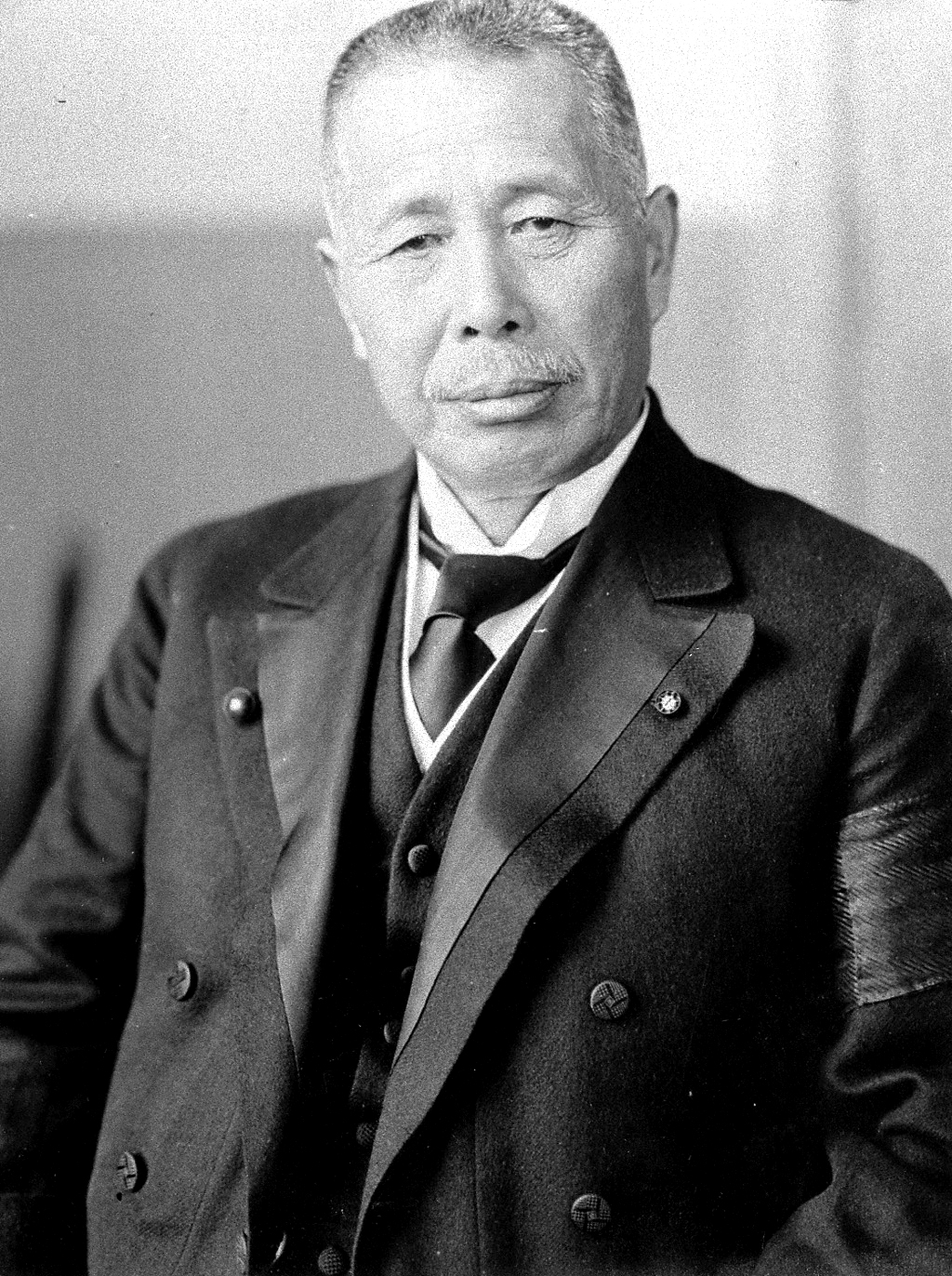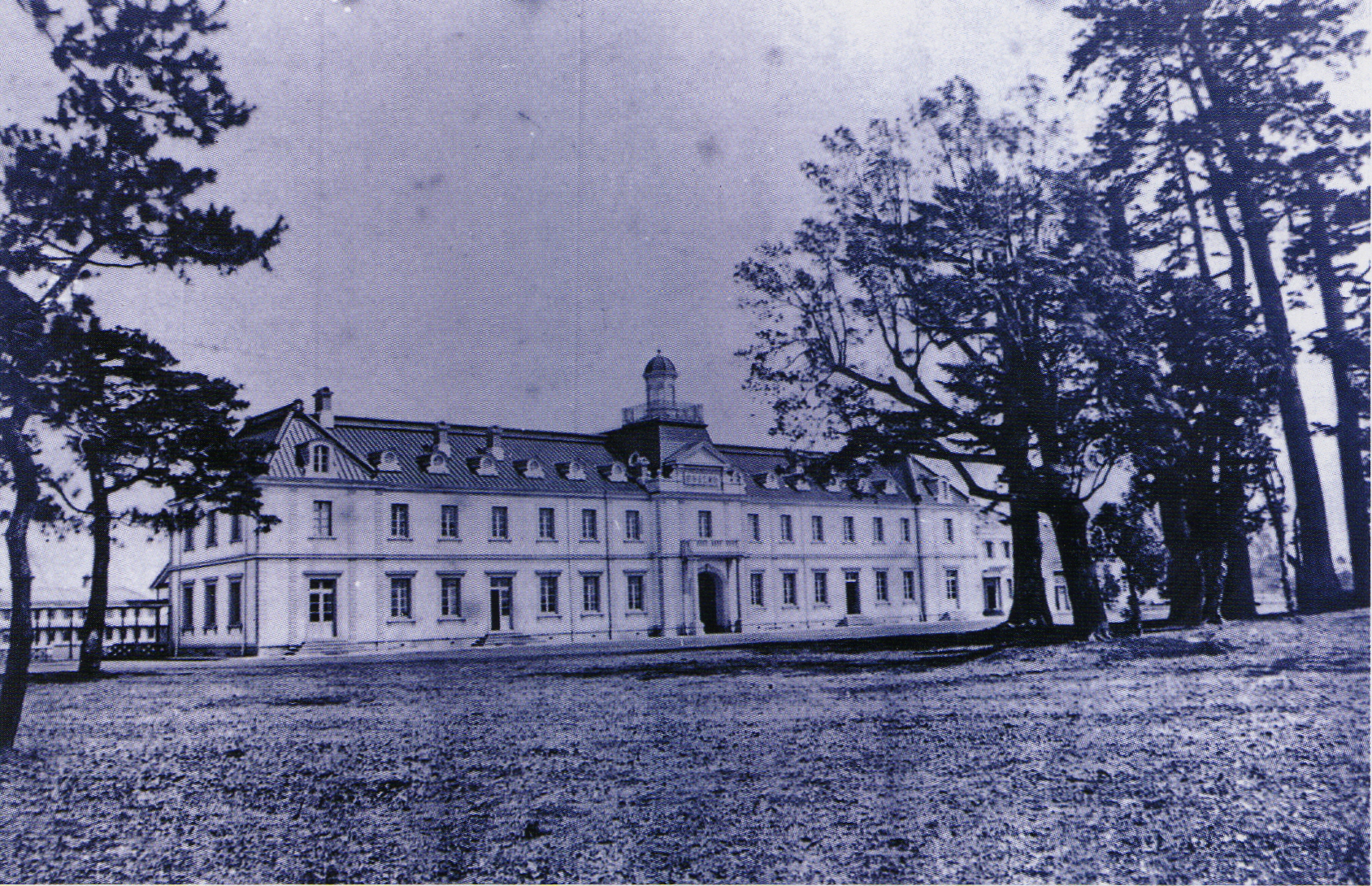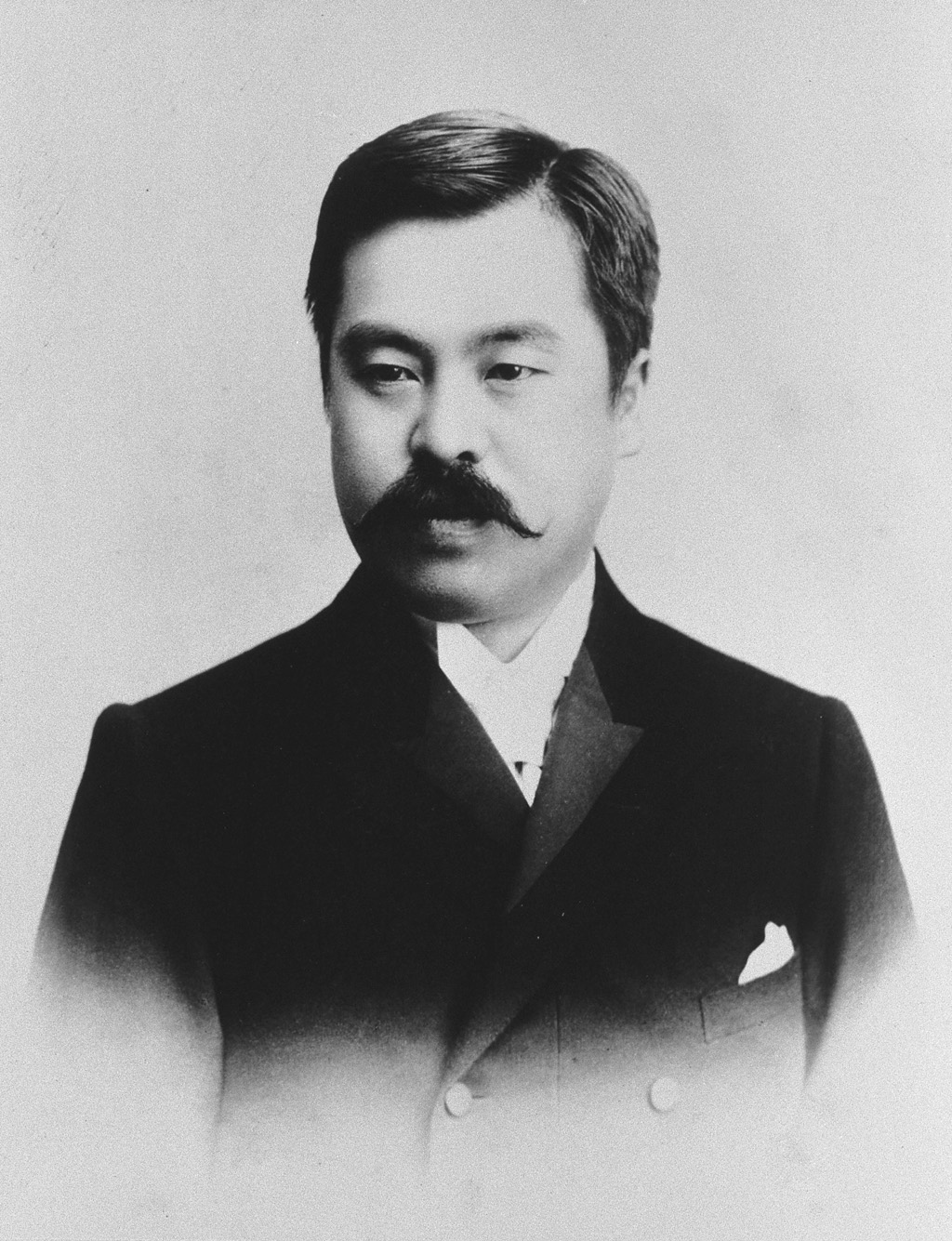|
Giichi Tanaka
Baron was a Japanese general and politician who served as Prime Minister of Japan from 1927 to 1929. Born to a ''samurai'' family in the Chōshū Domain, Tanaka became an officer in the Imperial Japanese Army and rose through the ranks. He served as Minister of the Army under Prime Ministers Hara Takashi and Yamamoto Gonnohyōe. After retiring from active duty he accepted the presidency of the Rikken Seiyūkai, a major conservative party. Following the resignation of the Wakatsuki Cabinet in 1927, Tanaka was appointed Prime Minister. In foreign affairs, he pursued a hawkish policy; in domestic affairs, he sought to suppress communist movements. Criticised for his handling of the unauthorised assassination of Zhang Zuolin by a Kwangtung Army officer, he resigned in 1929 and died soon afterwards. Early life and military career Tanaka was born as the third son of a low-ranking ''samurai'' family in the service of Chōshū Domain in Hagi, Nagato Province (modern day Yamaguchi ... [...More Info...] [...Related Items...] OR: [Wikipedia] [Google] [Baidu] |
Kazoku
The was the hereditary peerage of the Empire of Japan, which existed between 1869 and 1947. It was formed by merging the feudal lords (''Daimyo, daimyō'') and court nobles (''kuge'') into one system modelled after the British peerage. Distinguished military officers, politicians, and scholars were occasionally ennobled until the country's defeat in the World War II, Second World War in 1945 (). The system was abolished with the Constitution of Japan, 1947 constitution, which prohibited any form of aristocracy under it, but ''kazoku'' descendants still form the core of the traditional upper class in the country's society, distinct from the nouveau riche. should not be confused with , which is pronounced the same in Japanese, but written with different characters, meaning "immediate family" (as in the film ''Kazoku (film), Kazoku'' above). Origins Following the Meiji Restoration of 1868, the ancient court nobility of Kyoto, the , regained some of its lost status. Several ... [...More Info...] [...Related Items...] OR: [Wikipedia] [Google] [Baidu] |
Yamanashi Hanzō
was a general in the Imperial Japanese Army, Army Minister and Governor-General of Korea from 1927 to 1929. Biography Military career A native of Osumi District in Sagami Province (part of the present-day city of Hiratsuka, Kanagawa Prefecture), Yamanashi graduated from the former 8th class of the Imperial Japanese Army Academy in 1886. After serving in the IJA 5th Infantry Regiment, he graduated with honors from the 8th class of the Army Staff College in 1892. He was assigned to the IJA 4th Infantry Brigade and served in combat as an infantry platoon commander during the First Sino-Japanese WarKowner, ''Historical Dictionary of the Russo-Japanese War'', p. 429. with the IJA 2nd Army. After the war, Yamanashi's rise through the ranks was steady and rapid. He served in a number of administrative and staff positions, before being posted to Germany as a military attaché from 1898 to 1902. During the Russo-Japanese War of 1904 to 1905, Yamanashi was vice chief-of-staff of t ... [...More Info...] [...Related Items...] OR: [Wikipedia] [Google] [Baidu] |
Imperial Japanese Army Academy
The was the principal officer's training school for the Imperial Japanese Army. The programme consisted of a junior course for graduates of local army cadet schools and for those who had completed four years of middle school, and a senior course for officer candidates. History and background Established as the ''Heigakkō'' in 1868 in Kyoto, the officer training school was renamed the Imperial Japanese Army Academy in 1874 and relocated to Ichigaya, Tokyo. After 1898, the Academy came under the supervision of the Army Education Administration. In 1937 the Academy was divided, with the Senior Course Academy being relocated to Sagamihara in Kanagawa prefecture, and the Junior Course School moved to Asaka, Saitama. The 50th graduation ceremony was held in the new Academy buildings in Sagamihara on 20 December 1937, and was attended by the Shōwa Emperor (Emperor Hirohito) himself. In 1938, a separate school was established for military aviation officers. During World War II, the sc ... [...More Info...] [...Related Items...] OR: [Wikipedia] [Google] [Baidu] |
Tanaka Tatsuo
Tanaka Tatsuo (Japanese: 田中 龍夫, Tanaka Tatsuo; 20 September 1910 – March 30, 1998) was a Japanese politician and baron who served as Minister of Education from 1980 to 1981 and Minister of International Trade and Industry from 1976 to 1977. He was the eldest son of Prime Minister Tanaka Giichi. Early life and education Born on September 20, 1910, in Hagi, Yamaguchi, Japan, Tanaka was the eldest son of Tanaka Giichi, a general in the Imperial Japanese Army and future prime minister of Japan. After attending Gyosei High School, he entered Urawa High School (now Saitama University) and later enrolled in the Tokyo Imperial University. During this time, he inherited the title of baron following his father's death.''20世紀人名辞典''. 日外アソシエーツ. He also married Takahashi Setsuko. Bureaucratic career After graduating from Tokyo Imperial University in 1937, Tanaka joined the South Manchuria Railway. He later served as a researcher in the Planning Ag ... [...More Info...] [...Related Items...] OR: [Wikipedia] [Google] [Baidu] |
Fuchū, Tokyo
file:FuchuCityHall2023091.jpg, 260px, Fuchū City Hall is a Cities of Japan, city located in the western Tokyo, western portion of the Tokyo Metropolis, Japan. Fuchū serves as a regional commercial center and a commuter town for workers in central Tokyo. The city hosts large scale manufacturing facilities for Toshiba, NEC and Suntory, as well as the Bank of Japan's main computer operations center. Local sporting attractions include the Tokyo Racecourse and the training grounds of Japan Rugby League One, Top League Rugby union, rugby teams Toshiba Brave Lupus Tokyo, Toshiba Brave Lupus and Tokyo Sungoliath, Suntory Sungoliath. , the city had an estimated population of 260,508, and a population density of 8,900 persons per square kilometer. The total area of the city is . Geography Fuchū is located about 20 km west of the centre of Tokyo. Using the Keiō Line from Shinjuku Station, Shinjuku, it is 25 minutes to Fuchū Station (Tokyo), Fuchū Station (main station). It spr ... [...More Info...] [...Related Items...] OR: [Wikipedia] [Google] [Baidu] |
Empire Of Japan
The Empire of Japan, also known as the Japanese Empire or Imperial Japan, was the Japanese nation state that existed from the Meiji Restoration on January 3, 1868, until the Constitution of Japan took effect on May 3, 1947. From Japan–Korea Treaty of 1910, 1910 to Japanese Instrument of Surrender, 1945, it included the Japanese archipelago, the Kuril Islands, Kurils, Karafuto Prefecture, Karafuto, Korea under Japanese rule, Korea, and Taiwan under Japanese rule, Taiwan. The South Seas Mandate and Foreign concessions in China#List of concessions, concessions such as the Kwantung Leased Territory were ''de jure'' not internal parts of the empire but dependent territories. In the closing stages of World War II, with Japan defeated alongside the rest of the Axis powers, the Japanese Instrument of Surrender, formalized surrender was issued on September 2, 1945, in compliance with the Potsdam Declaration of the Allies of World War II, Allies, and the empire's territory subsequent ... [...More Info...] [...Related Items...] OR: [Wikipedia] [Google] [Baidu] |
Tokyo
Tokyo, officially the Tokyo Metropolis, is the capital of Japan, capital and List of cities in Japan, most populous city in Japan. With a population of over 14 million in the city proper in 2023, it is List of largest cities, one of the most populous urban areas in the world. The Greater Tokyo Area, which includes Tokyo and parts of six neighboring Prefectures of Japan, prefectures, is the most populous metropolitan area in the world, with 41 million residents . Lying at the head of Tokyo Bay, Tokyo is part of the Kantō region, on the central coast of Honshu, Japan's largest island. It is Japan's economic center and the seat of the Government of Japan, Japanese government and the Emperor of Japan. The Tokyo Metropolitan Government administers Tokyo's central Special wards of Tokyo, 23 special wards, which formerly made up Tokyo City; various commuter towns and suburbs in Western Tokyo, its western area; and two outlying island chains, the Tokyo Islands. Although most of the w ... [...More Info...] [...Related Items...] OR: [Wikipedia] [Google] [Baidu] |
Tokugawa Shogunate
The Tokugawa shogunate, also known as the was the military government of Japan during the Edo period from 1603 to 1868. The Tokugawa shogunate was established by Tokugawa Ieyasu after victory at the Battle of Sekigahara, ending the civil wars of the Sengoku period following the collapse of the Ashikaga shogunate. Ieyasu became the ''shōgun,'' and the Tokugawa clan governed Japan from Edo Castle in the eastern city of Edo (Tokyo), Edo (Tokyo) along with the ''daimyō'' lords of the ''samurai'' class. The Tokugawa shogunate organized Japanese society under the strict Edo society, Tokugawa class system and banned most foreigners under the isolationist policies of ''Sakoku'' to promote political stability. The Tokugawa shoguns governed Japan in a feudal system, with each ''daimyō'' administering a ''Han system, han'' (feudal domain), although the country was still nominally organized as provinces of Japan, imperial provinces. Under the Tokugawa shogunate, Japan experienced rapid ... [...More Info...] [...Related Items...] OR: [Wikipedia] [Google] [Baidu] |
Chōshū Domain
The , also known as the , was a domain (''han'') of the Tokugawa Shogunate of Japan during the Edo period from 1600 to 1871.Deal, William E. (2005) ''Handbook to Life in Medieval and Early Modern Japan,'' p. 81 The Chōshū Domain was based at Hagi Castle in Nagato Province, in the modern city of Hagi, located in the Chūgoku region of the island of Honshu. The Chōshū Domain was ruled for its existence by the '' tozama'' ''daimyō'' of the Mōri, whose branches also ruled the neighboring Chōfu and Kiyosue domains and was assessed under the '' Kokudaka'' system with peak value of 369,000 ''koku''. The Chōshū Domain was the most prominent anti-Tokugawa domain and formed the Satchō Alliance with the rival Satsuma Domain during the Meiji Restoration, becoming instrumental in the establishment of the Empire of Japan and the Meiji oligarchy. The Chōshū Domain was dissolved in the abolition of the han system in 1871 by the Meiji government and its territory was absorbed ... [...More Info...] [...Related Items...] OR: [Wikipedia] [Google] [Baidu] |
Hagi, Yamaguchi
file:Hagicity aerialshot.jpg, 270px, Aerial view of central Hagi is a Cities of Japan, city located in Yamaguchi Prefecture, Japan. , the city had an estimated population of 43,233 in 22,803 households and a population density of 62 persons per km². The total area of the city is . It is known for being the birthplace of Hagi ware, a type of Japanese pottery. Geography Facing the Sea of Japan on one side and being surrounded by mountains on three sides, the center of Hagi is located on one of the largest delta areas in Japan. The Abu River splits into two, forming the Hashimoto River and the Matsumoto River. Outlying islands include Mishima, Oshima, Aishima, Hitsushima, Hashima, Hisima, and Oshima. of which Ainoshima and Hitsushima are inhabited. Neighboring municipalities Shimane Prefecture *Masuda, Shimane, Masuda *Tsuwano, Shimane, Tsuwano Yamaguchi Prefecture *Abu, Yamaguchi, Abu *Nagato, Yamaguchi, Nagato *Yamaguchi (city), Yamaguchi Climate Hagi has a humid subtropical cl ... [...More Info...] [...Related Items...] OR: [Wikipedia] [Google] [Baidu] |
Emperor Taishō
, posthumously honored as , was the 123rd emperor of Japan according to the traditional order of succession, reigning from 1912 until his death in 1926. His reign, known as the Taishō era, was characterized by a liberal and democratic shift in domestic political power, known as Taishō Democracy. Yoshihito also oversaw Japan during World War I, Japan's participation in the World War I, First World War from 1914 to 1918, the Spanish flu, Spanish flu pandemic, and the 1923 Great Kantō earthquake, Great Kantō earthquake of 1923. Born to Emperor Meiji and his concubine Yanagiwara Naruko, Yoshihito was proclaimed crown prince and heir apparent in 1888, his two older siblings having died in infancy. He suffered various health problems as a child, including meningitis soon after his birth. In 1900, he married Empress Teimei, Sadako Kujō, a member of the Kujō family of the Fujiwara clan; the couple had four sons. In 1912, Yoshihito became emperor upon the death of his father, but as ... [...More Info...] [...Related Items...] OR: [Wikipedia] [Google] [Baidu] |
House Of Peers (Japan)
The was the upper house of the National Diet#History, Imperial Diet as mandated under the Meiji Constitution, Constitution of the Empire of Japan (in effect from 11 February 1889 to 3 May 1947). Background In 1869, under the new Meiji government, a Japanese peerage was created by an Imperial decree merging the former court nobility ''(kuge)'' and former feudal lords (''daimyos'') into a single new Aristocracy (class), aristocratic Social class, class called the ''kazoku.'' A second imperial ordinance in 1884 grouped the ''kazoku'' into five ranks equivalent to the European Aristocracy (class), aristocrats: prince (equivalent to a European duke), marquess, count, viscount, and baron. Although this grouping idea was taken from the European peerage, the Japanese titles were taken from Chinese language, Chinese and based on the ancient Social structure of China, feudal system in China. Itō Hirobumi and the other Meiji period, Meiji leaders deliberately modeled the chamber on the ... [...More Info...] [...Related Items...] OR: [Wikipedia] [Google] [Baidu] |








